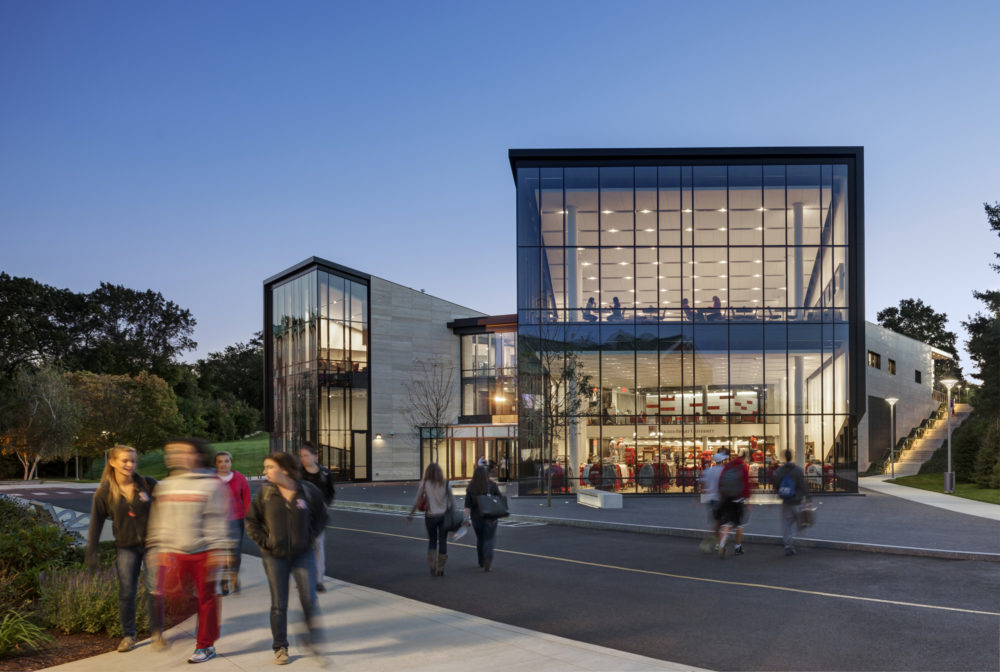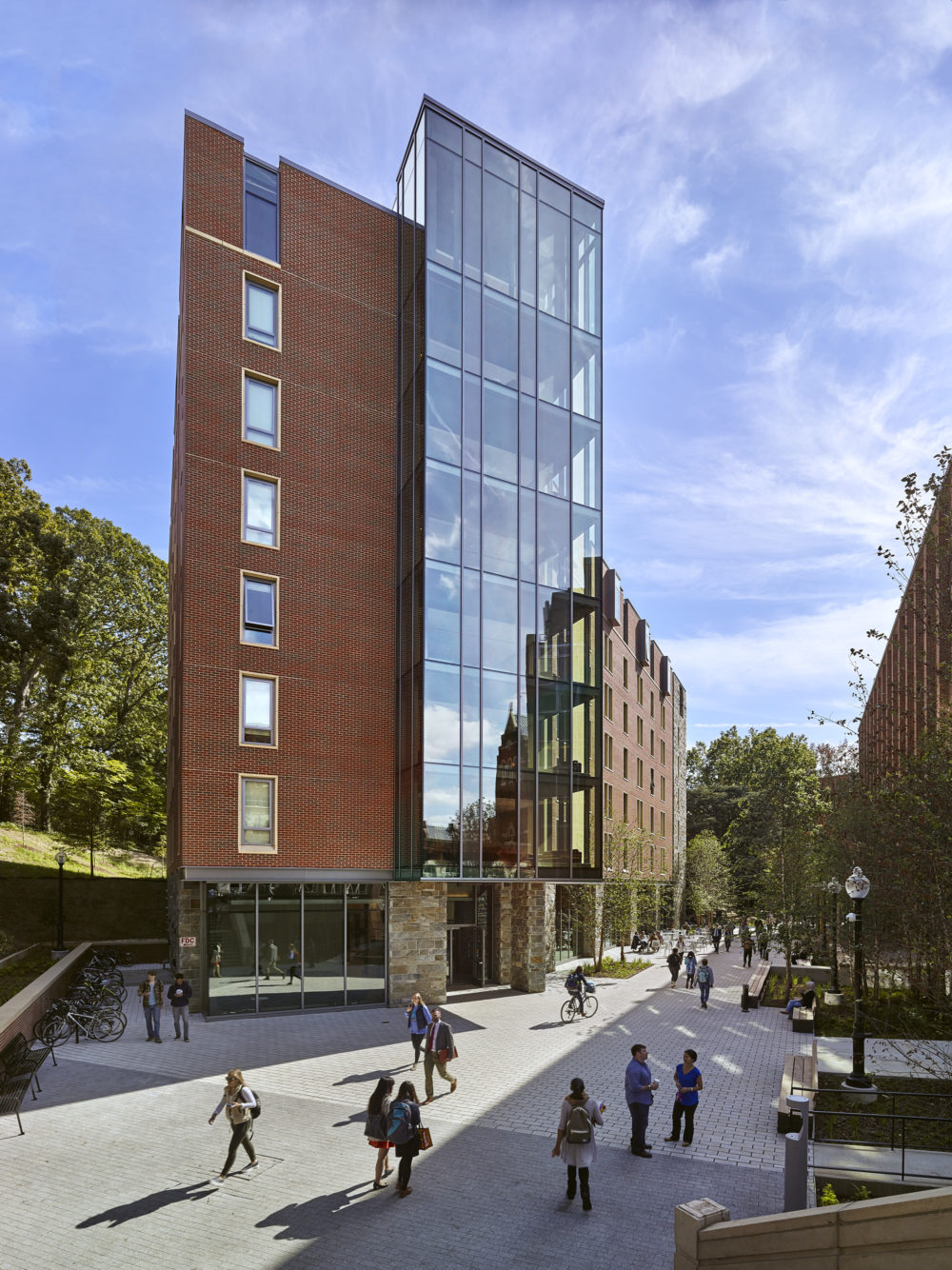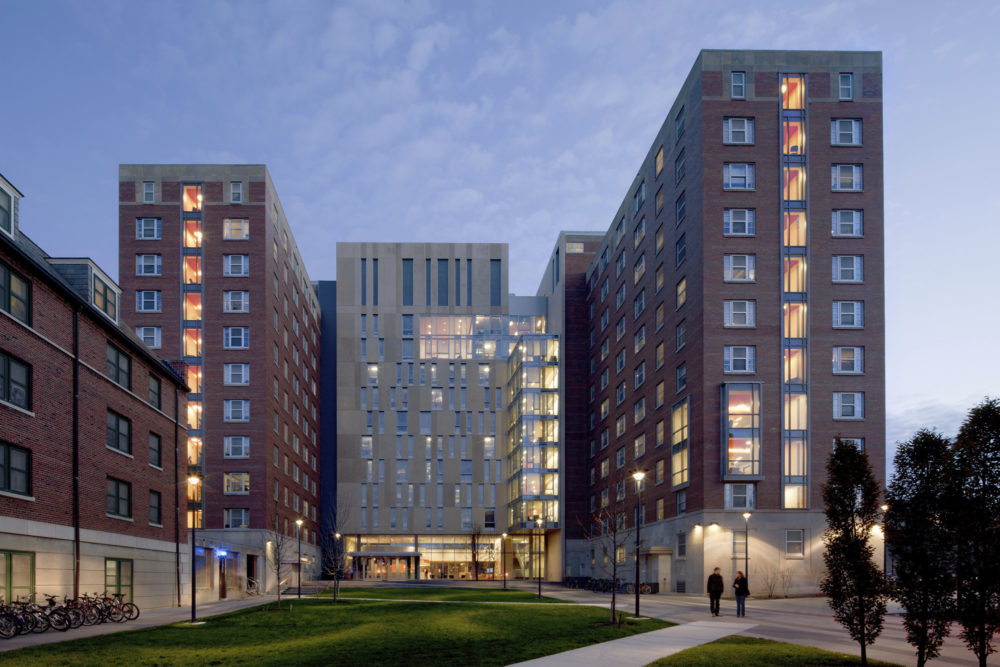Test before you invest: a nimble approach to understanding student life needs to inform long-term building plans
Dartmouth College House Center Pilots
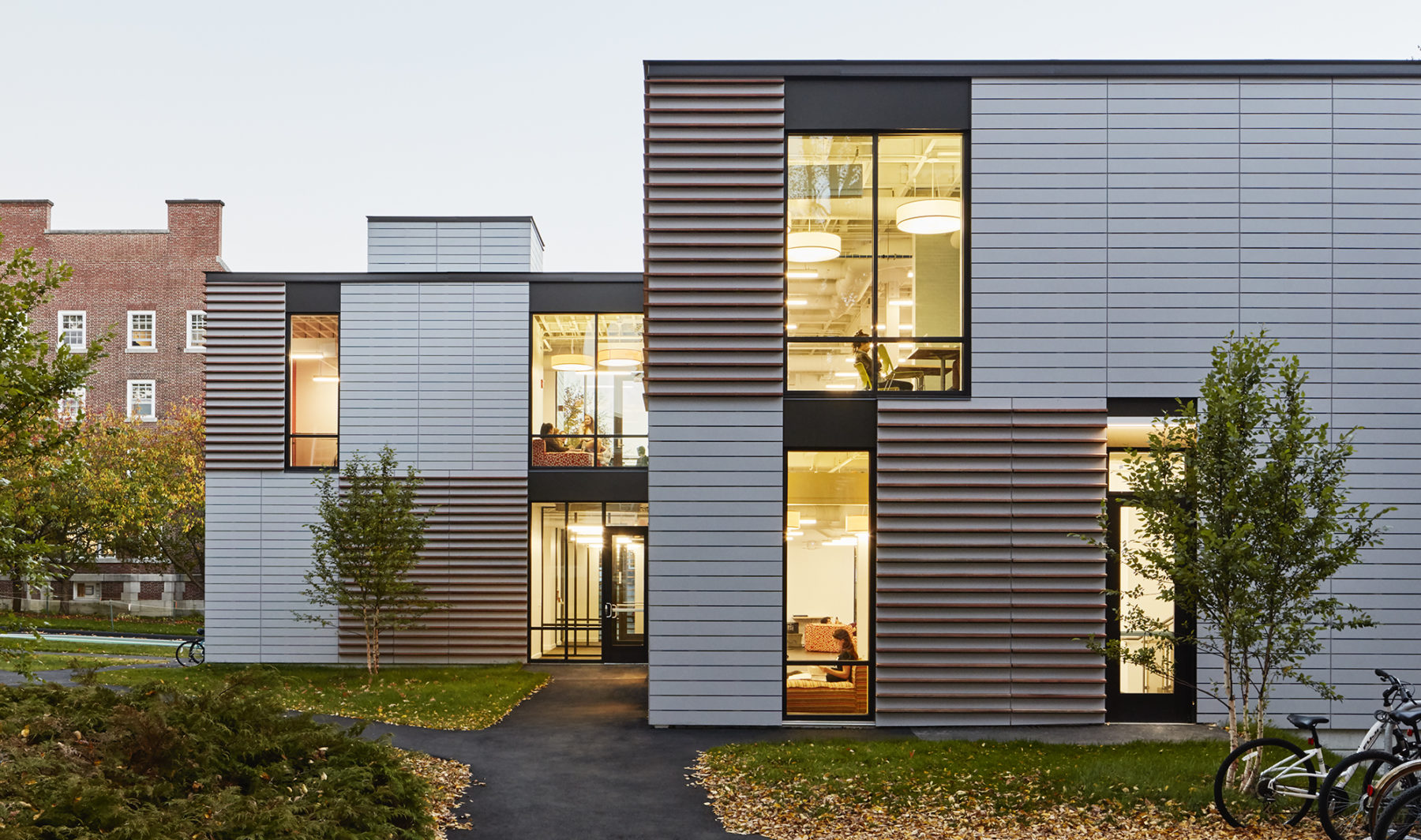
The design team embraced the concept of “temporary” buildings to rethink traditional models of residential life construction on Dartmouth College's Hanover campus
In 2014, Sasaki completed a study of Dartmouth College’s residential life experience. Following recommendations from this study, the college officially moved to a house system in 2016. This change will strengthen community, promote continuity of friendship over students’ college careers, and increase opportunities for deeper intellectual engagement through informal interactions. The six house communities are formed from clusters of existing residence halls, many of which were built between 1920–50. As this housing stock had not been built to accommodate student life needs, four communities required additional common space to support the new house programming. Sasaki designed two temporary House Centers to meet this need.
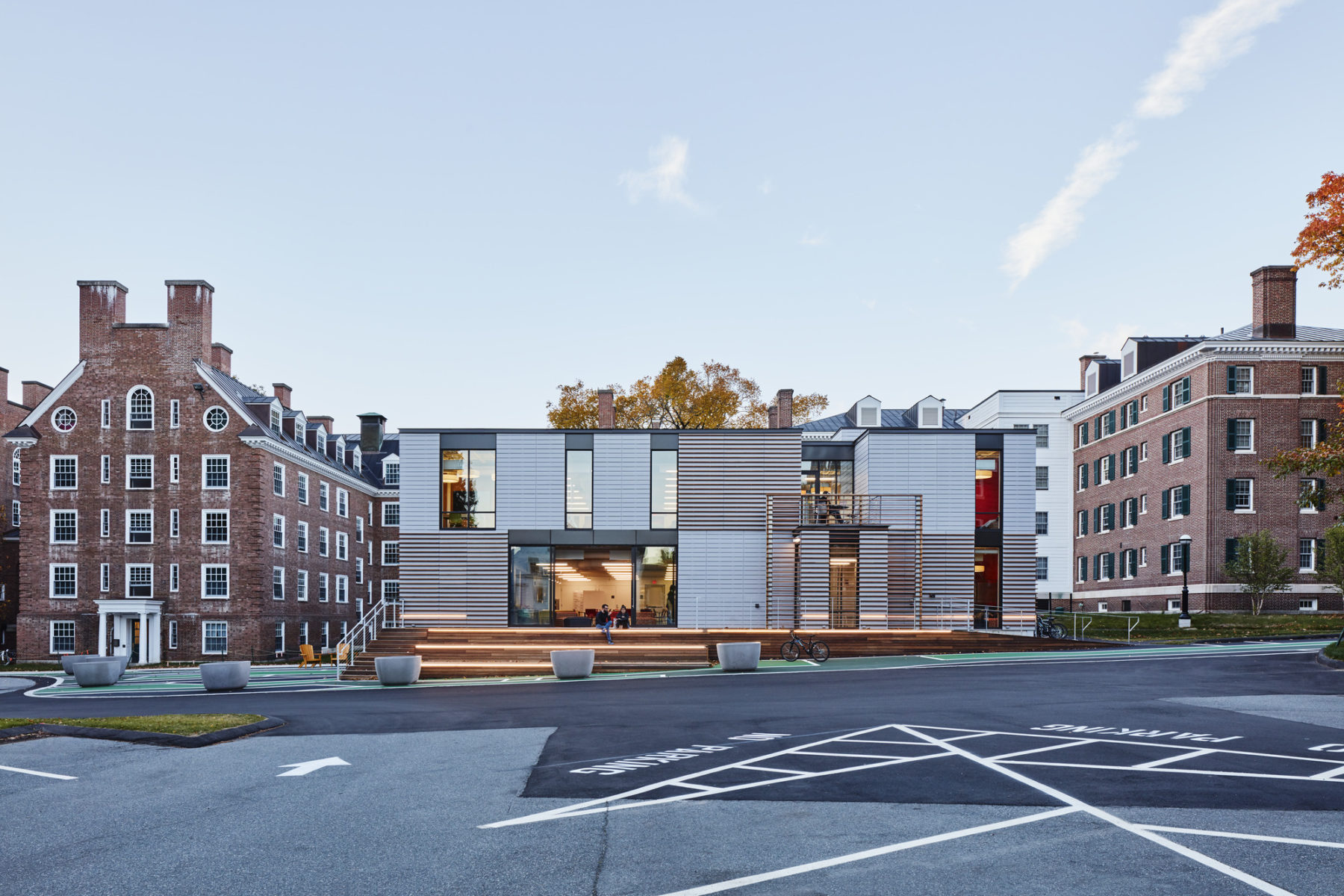
The team designed these pilot house centers to test various program styles to uncover new insights into the needs and wants of the student body
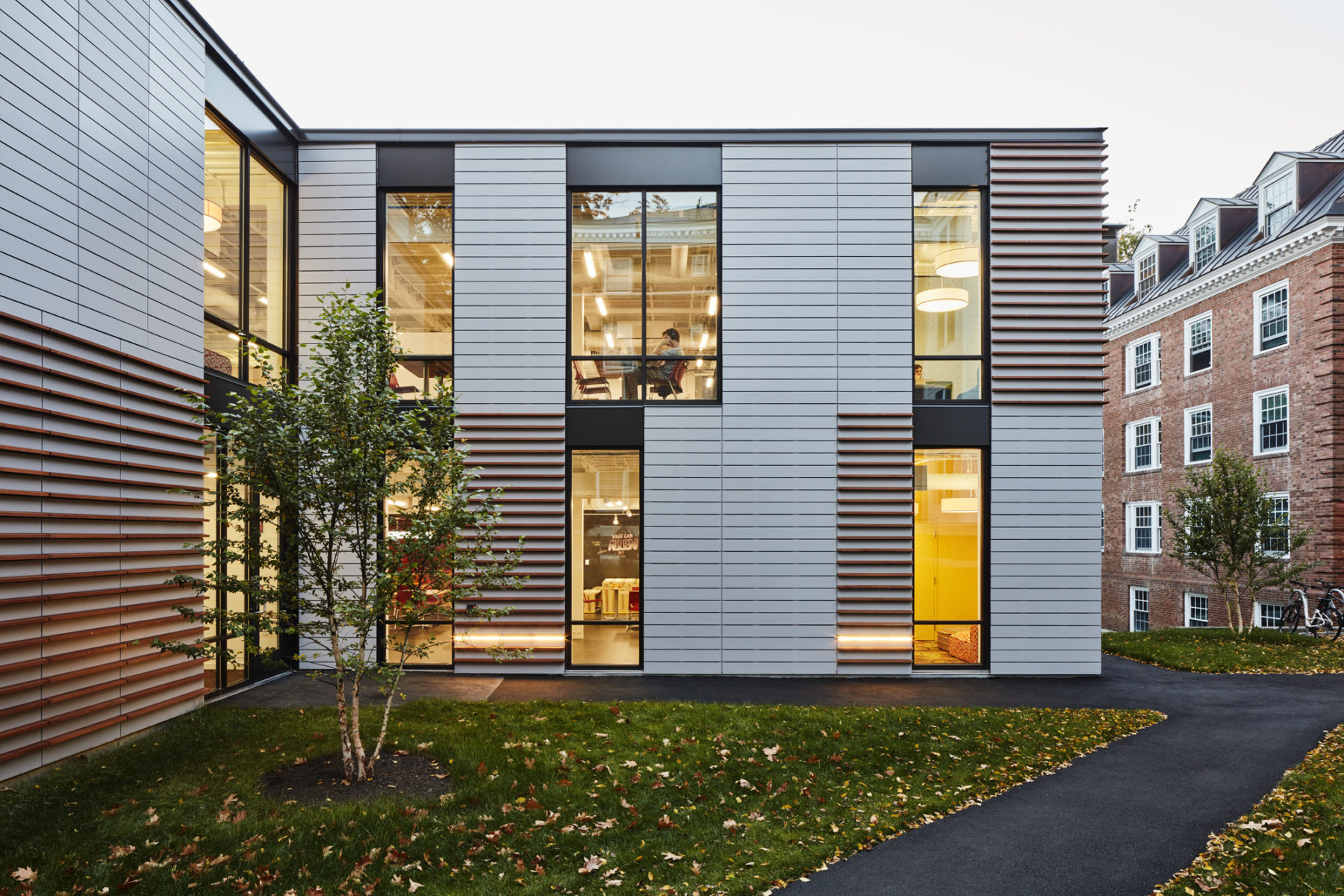
The College’s vision for residential life is one of intellectual engagement, community, and continuity
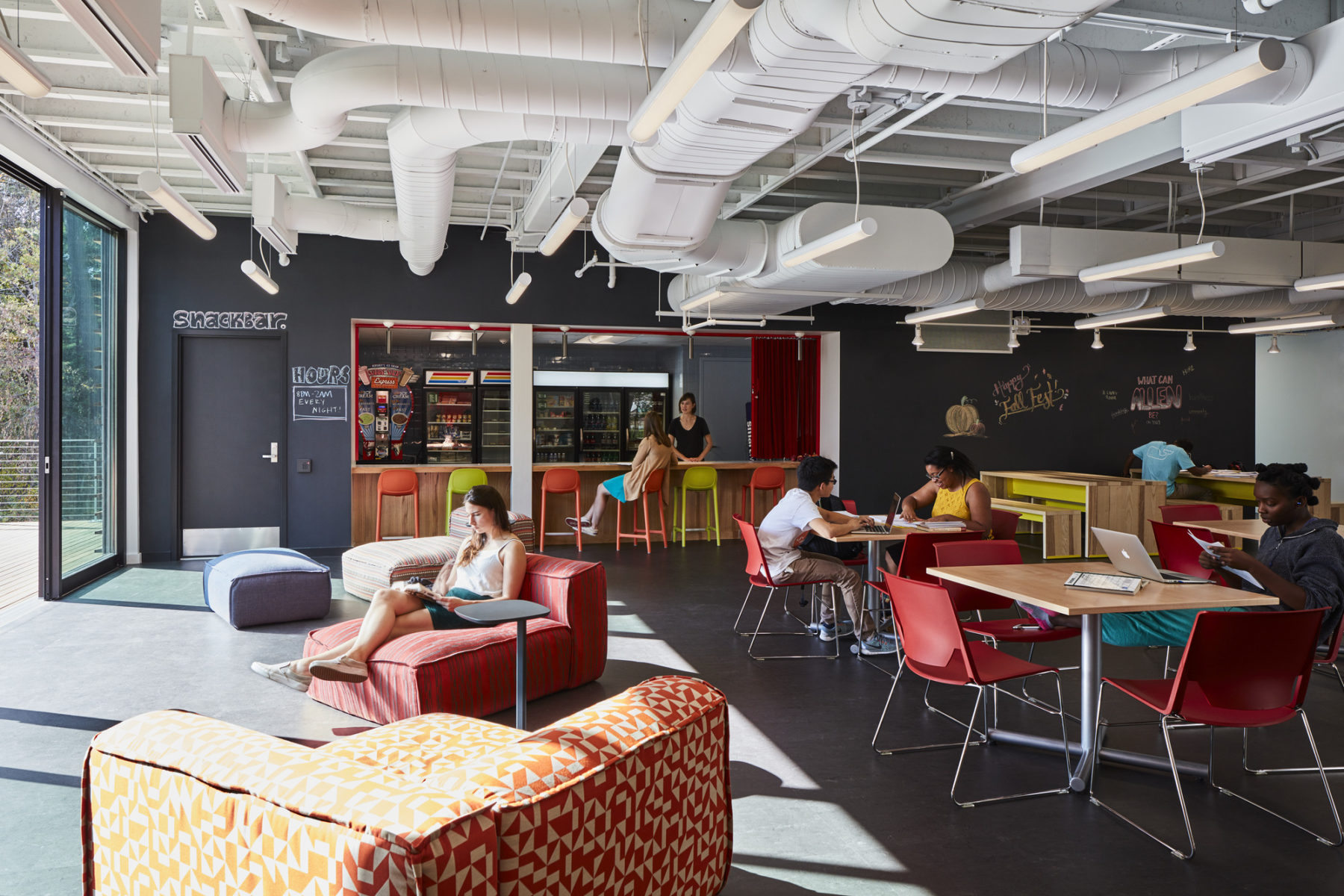
Open floorplans and exposed structural and mechanical systems reinforce the experimental intent of the structures
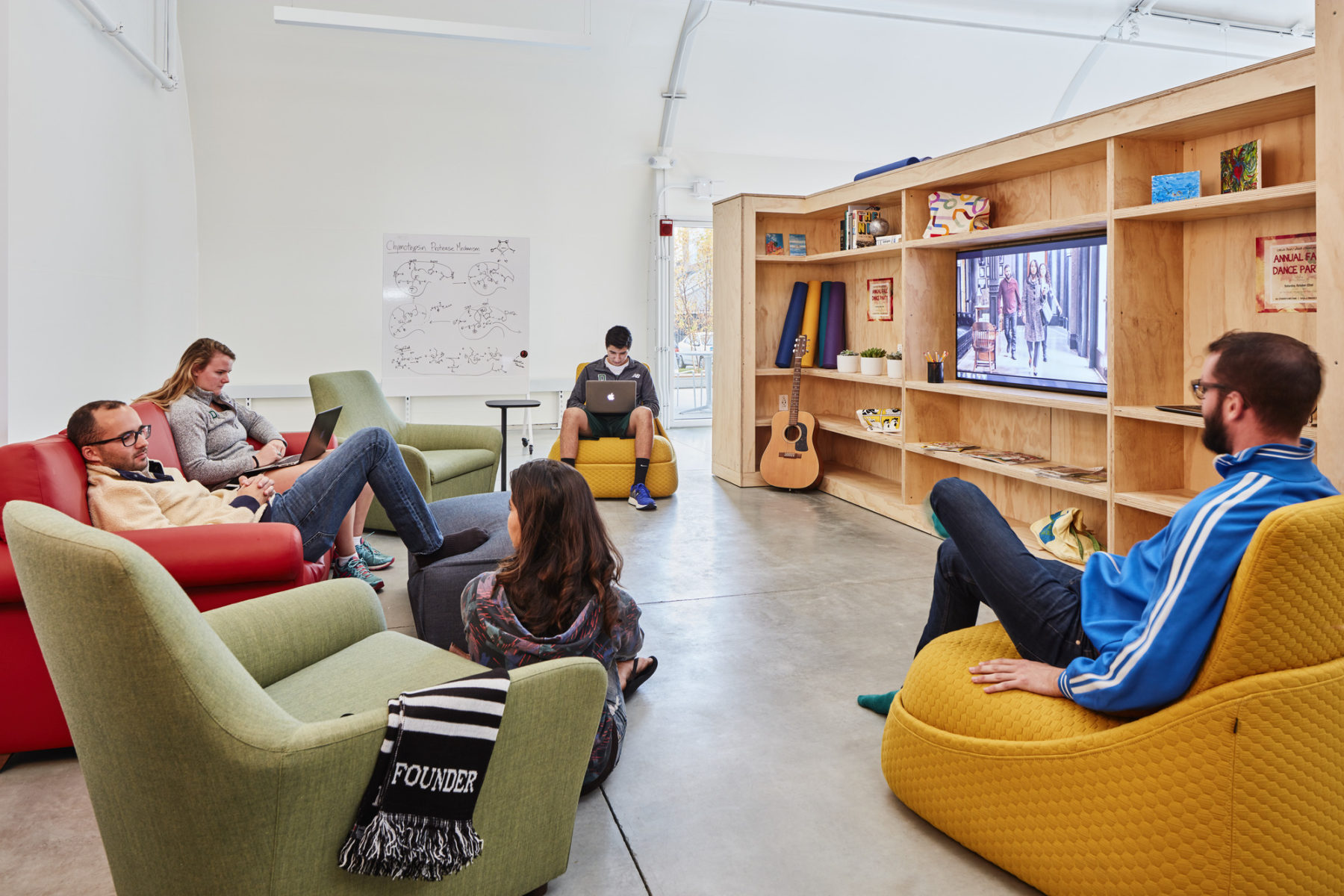
These flexible spaces are meant to serve as “extended living rooms”
The design team embraced the concept of “temporary” buildings to rethink traditional models of residential life construction. A demonstration of the team’s forward-looking thinking, the structures provide several benefits. Low cost and simple design enabled fast construction to support the new system; flexible programming enables the discovery of what spaces work best in support of future residence hall construction; and the buildings can be adapted to suit future uses.
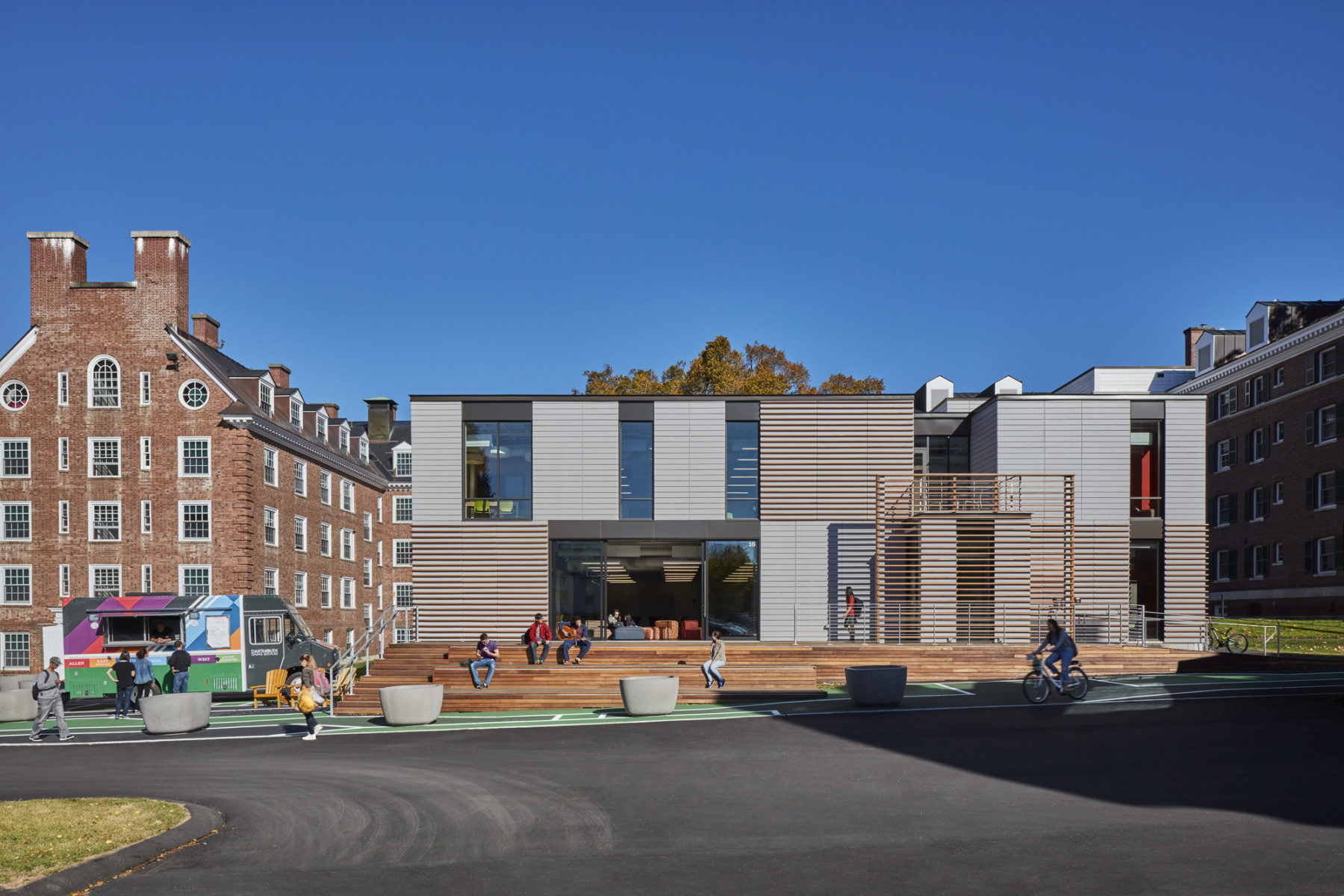
The School/Allen House Center is envisioned as a “townhouse,” with residential scale and materials, and floor-to-ceiling windows
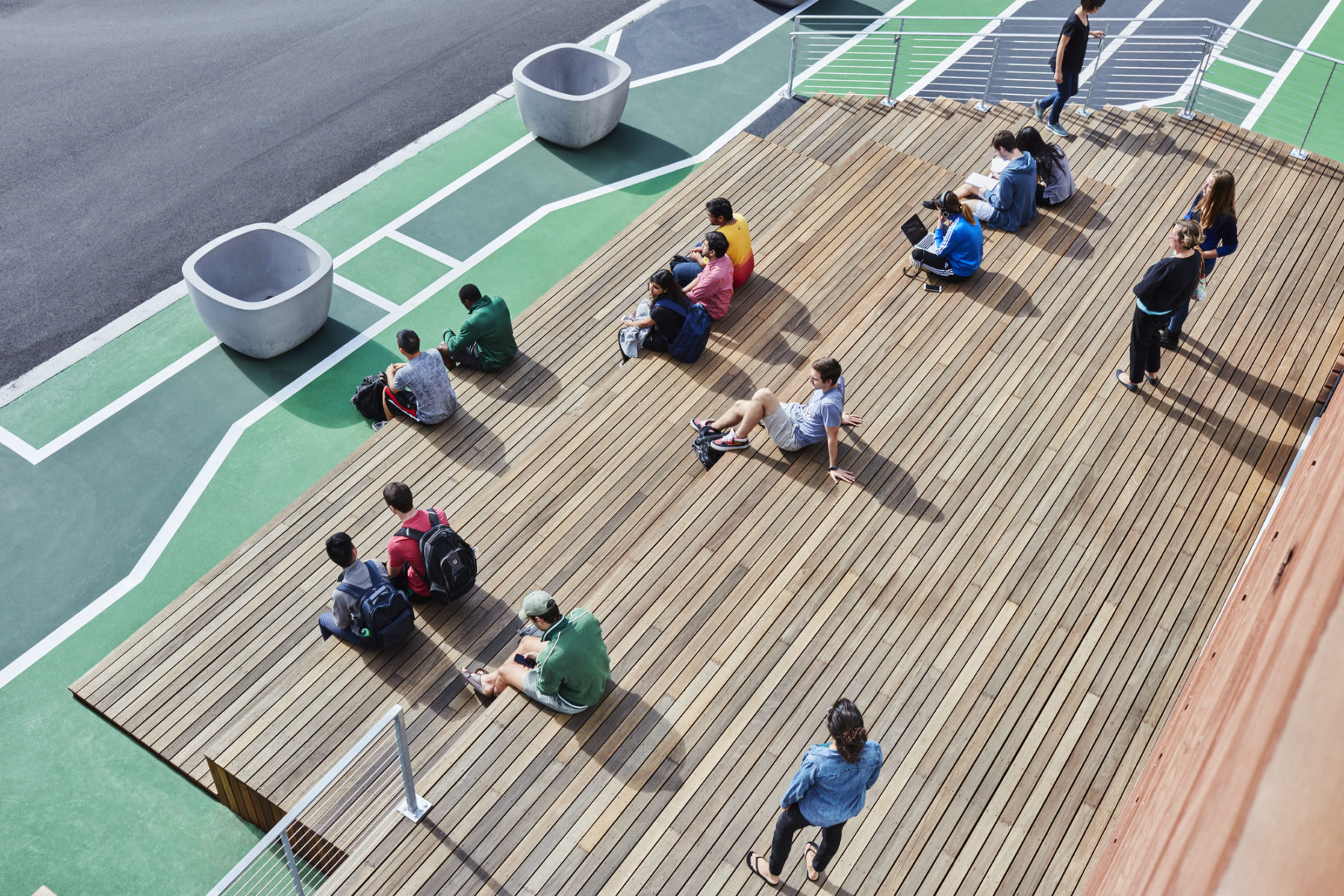
The School/Allen House Center’s terraced outdoor seating invites informal gatherings in the warmer months in Hanover
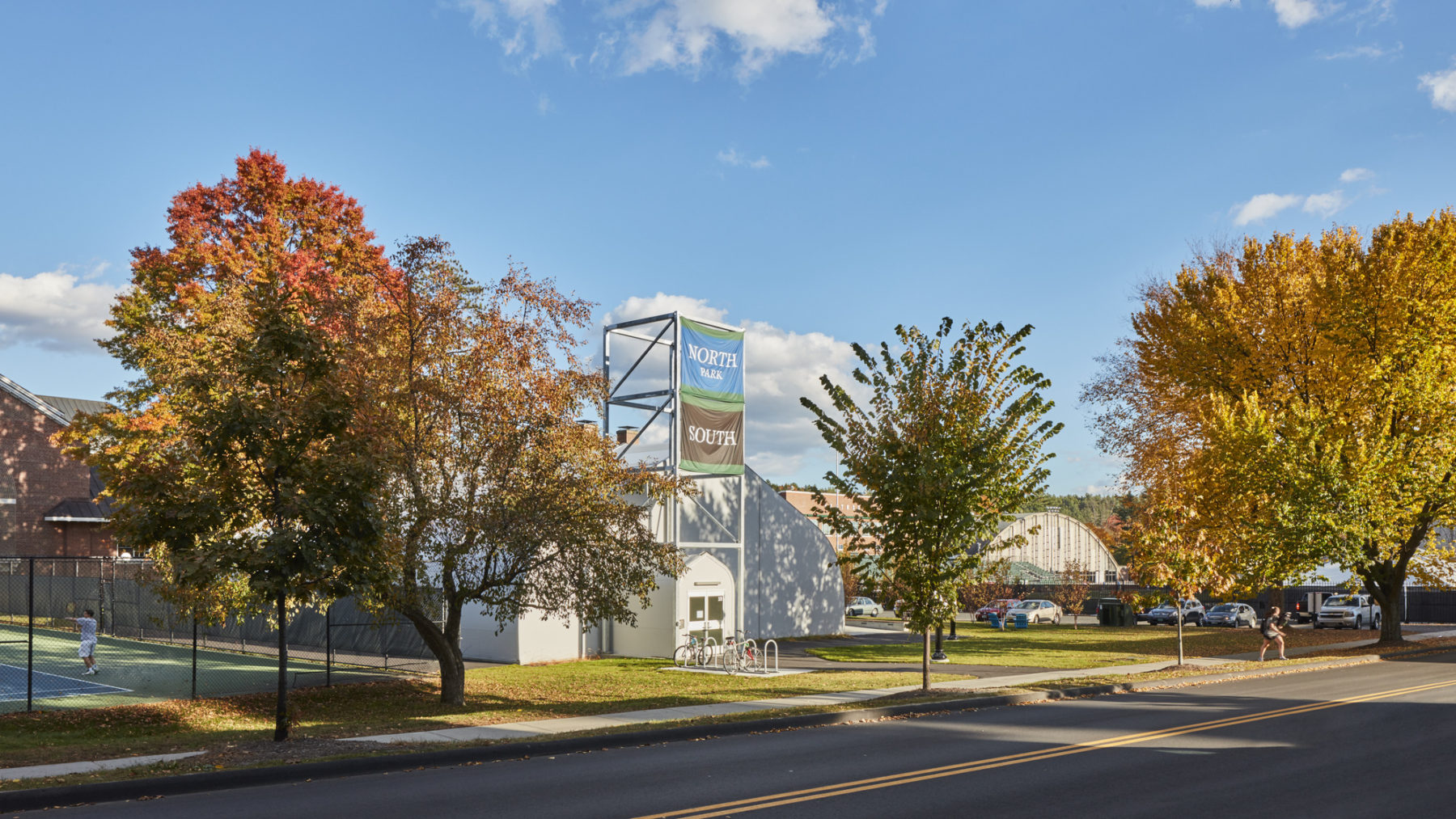
The North Park/South House Center, is a tensile membrane structure
These two buildings were completed in time for the Fall 2016 semester and have been an immediate success with students. Several students have commented on how these buildings provide a space that was previously lacking. These buildings offer a “living room” feel—more casual than the library, more intimate than the dining hall, and more social than the traditional residence halls.
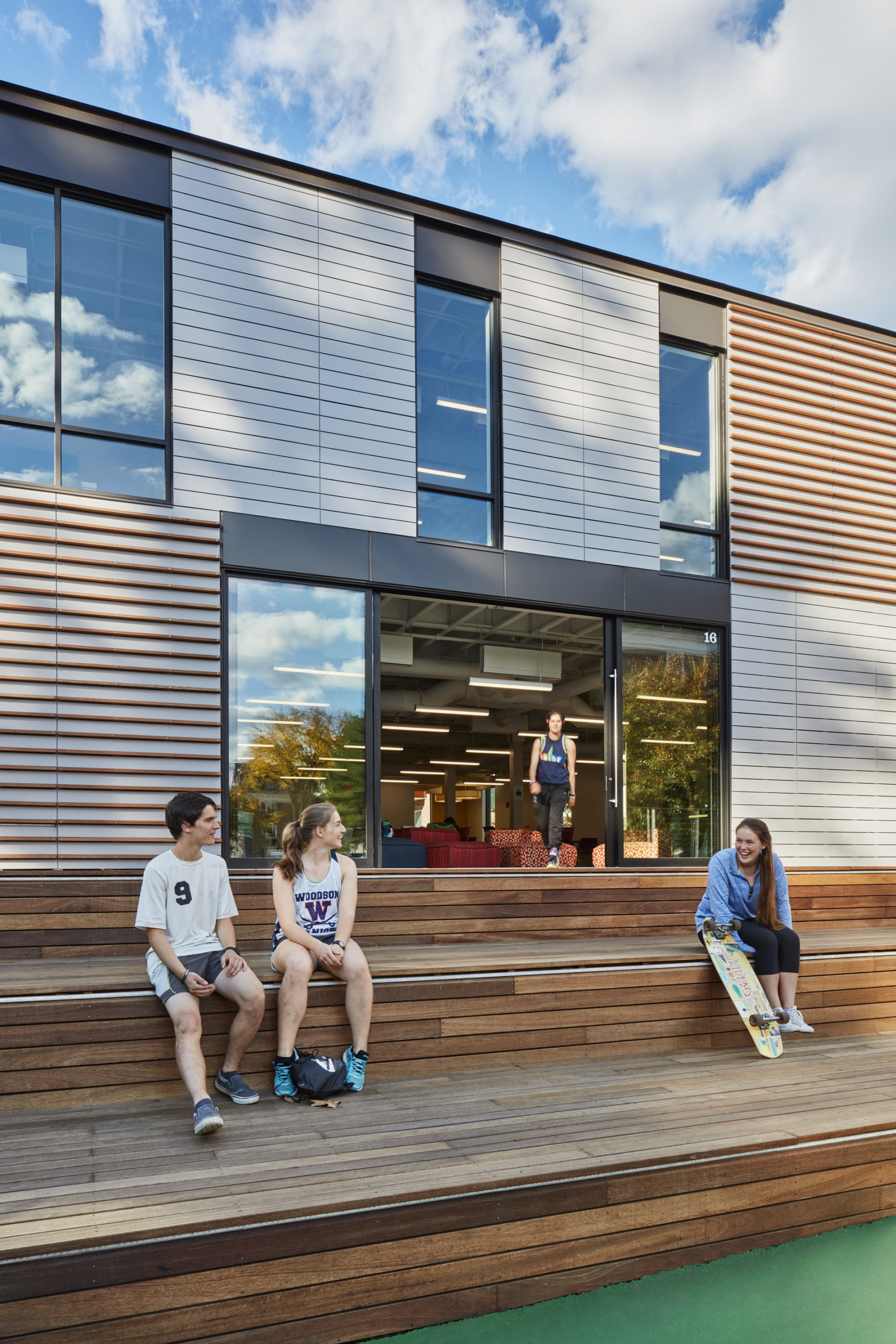
With a cozy balcony and a deck accessible by glass double doors, the center creates a welcoming, home-like feel
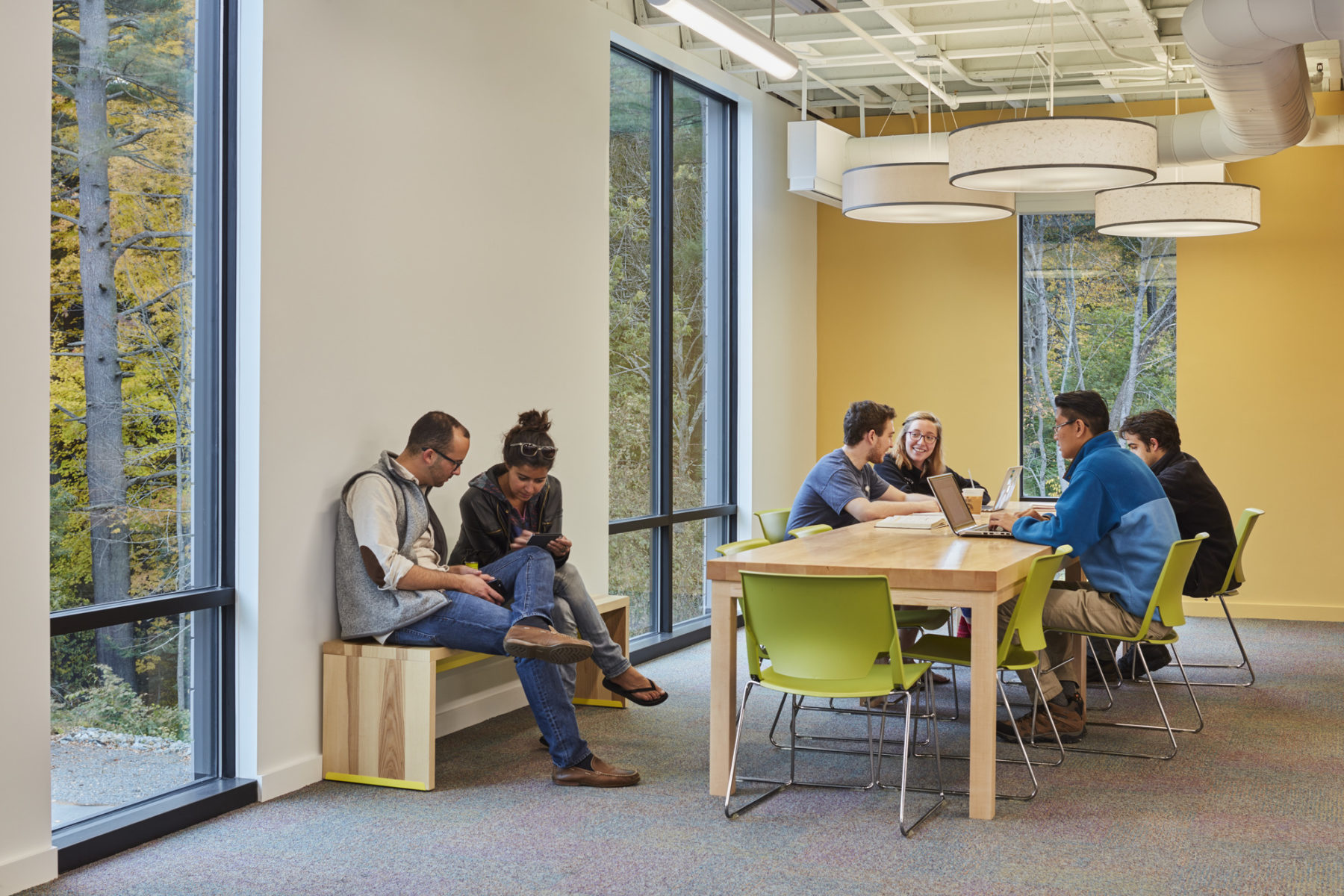
A variety of spaces throughout enable students to work or relax in different configurations
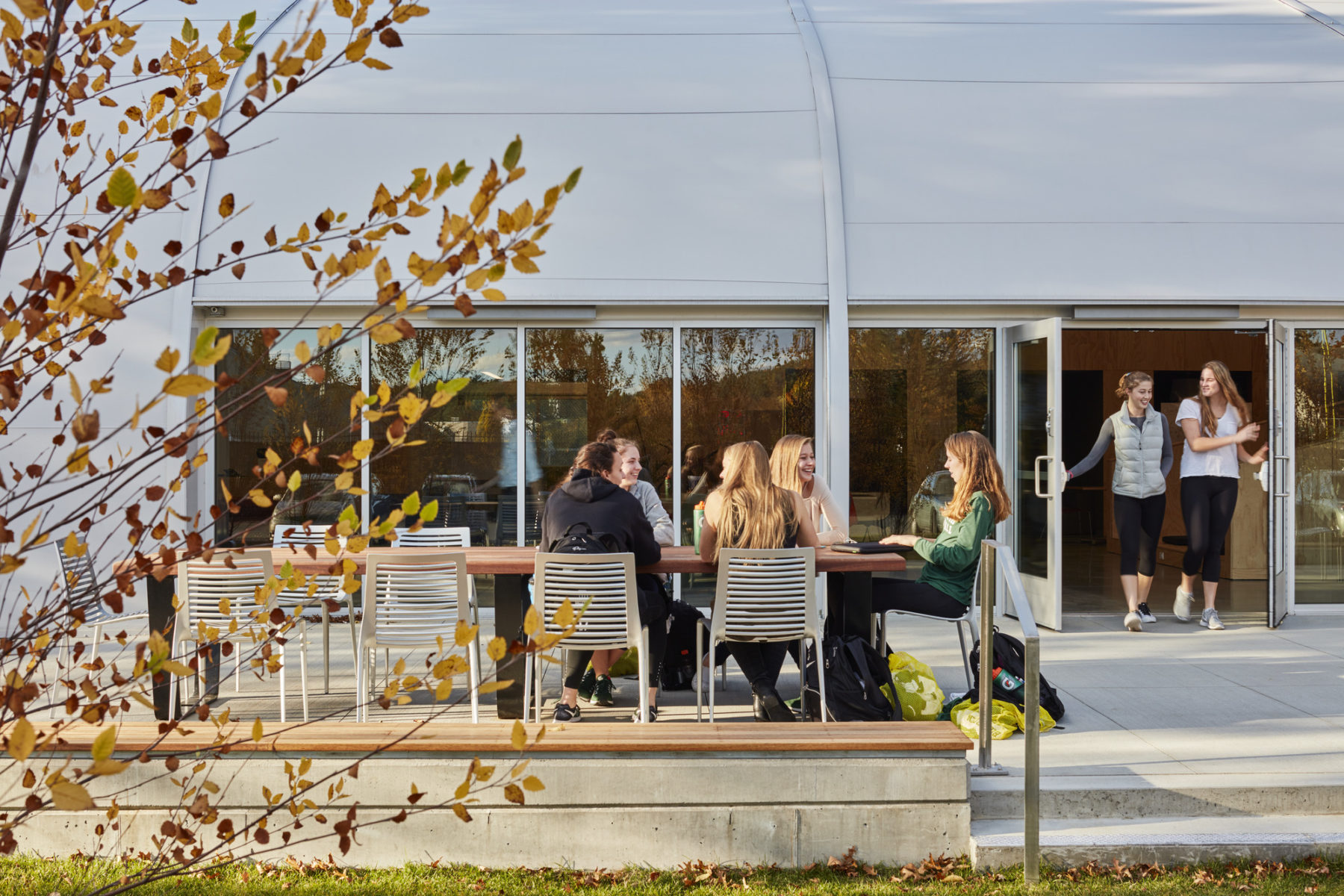
The two buildings serve as third spaces on campus (neither dorm nor library/student center), filling an important student life need
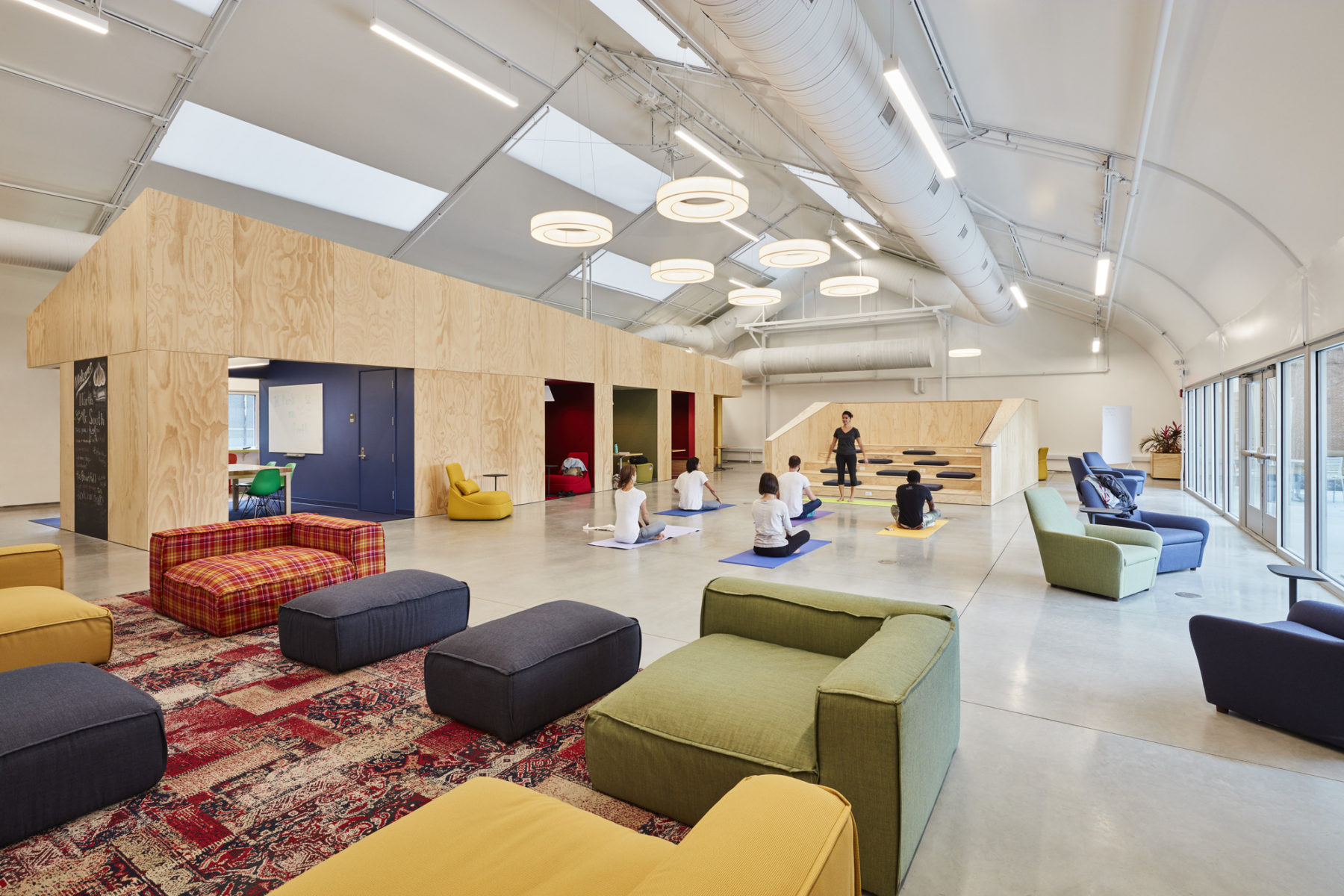
Movable furniture encourages students to “own” the space, testing configurations that complement their needs
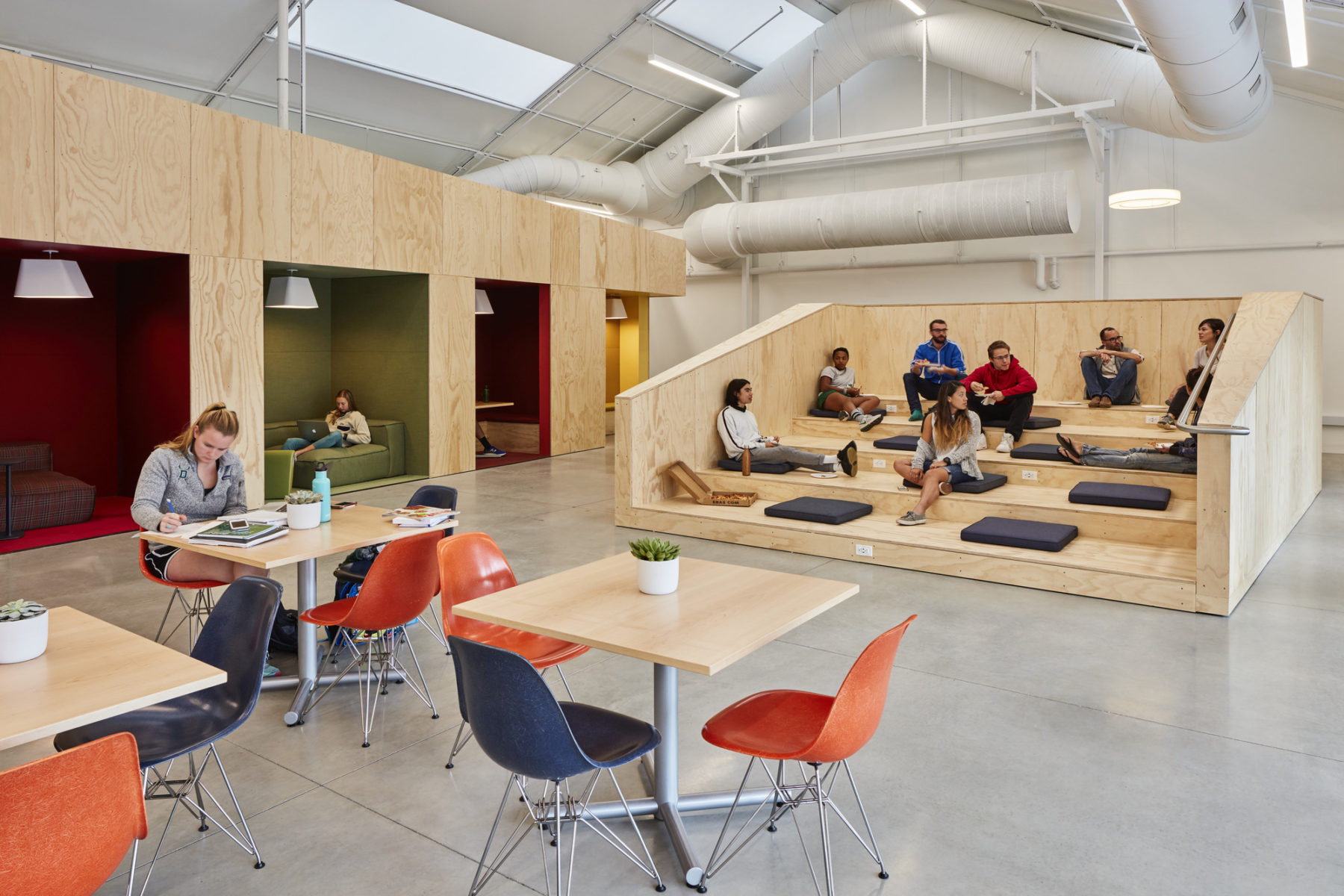
These structures break the open room into a mixture of intimate study nooks and larger gathering spaces
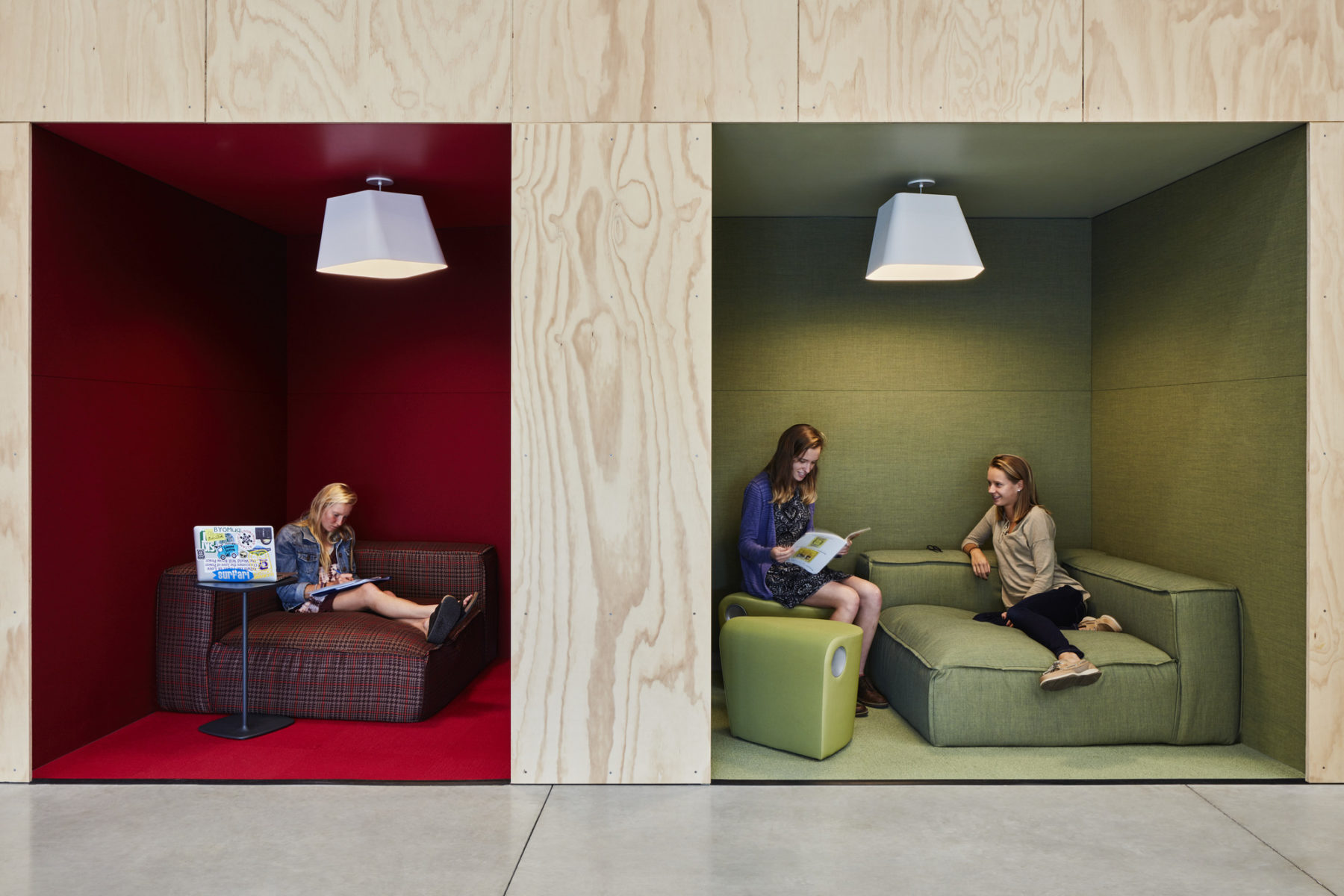
Study nooks provide students an alternative to the library or their dorm rooms for studying
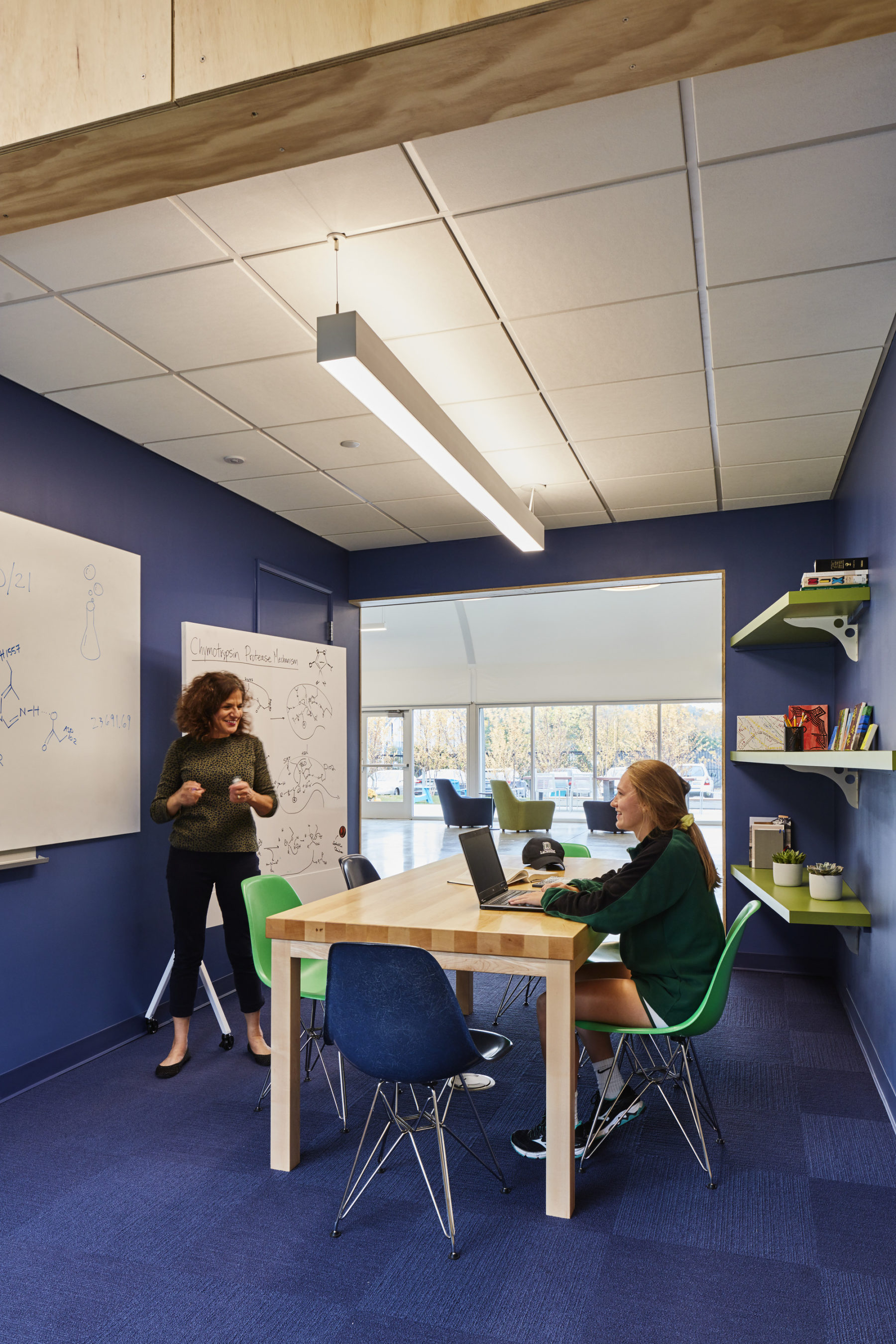
Study groups often use these spaces to gather to work through ideas collaboratively
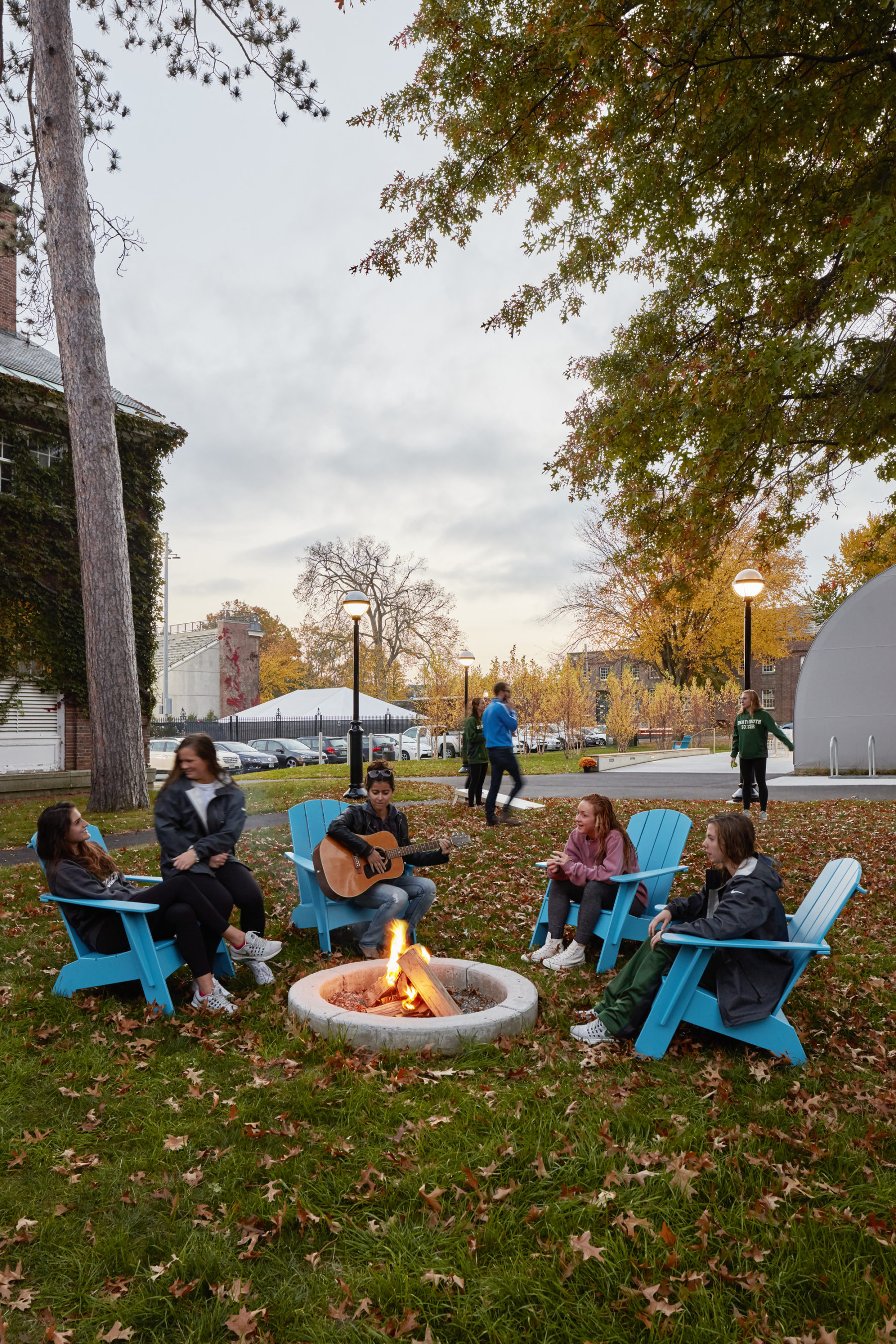
A fire pit just outside the North Par/South House Center is well used in the fall and spring
Movable furniture encourages students to “own” the space, testing configurations that complement their needs
These structures break the open room into a mixture of intimate study nooks and larger gathering spaces
Study nooks provide students an alternative to the library or their dorm rooms for studying
Study groups often use these spaces to gather to work through ideas collaboratively
A fire pit just outside the North Par/South House Center is well used in the fall and spring
The architectural styles vary, reinforcing the experimental intent. House Center A is a tensile membrane structure that emits a soft glow at night, while House Center B is a wood frame building with cement-board cladding and floor-to-ceiling windows. Both have open floorplans and exposed structural and mechanical systems. Movable furniture encourage students to “own” the space, testing configurations that complement their needs.
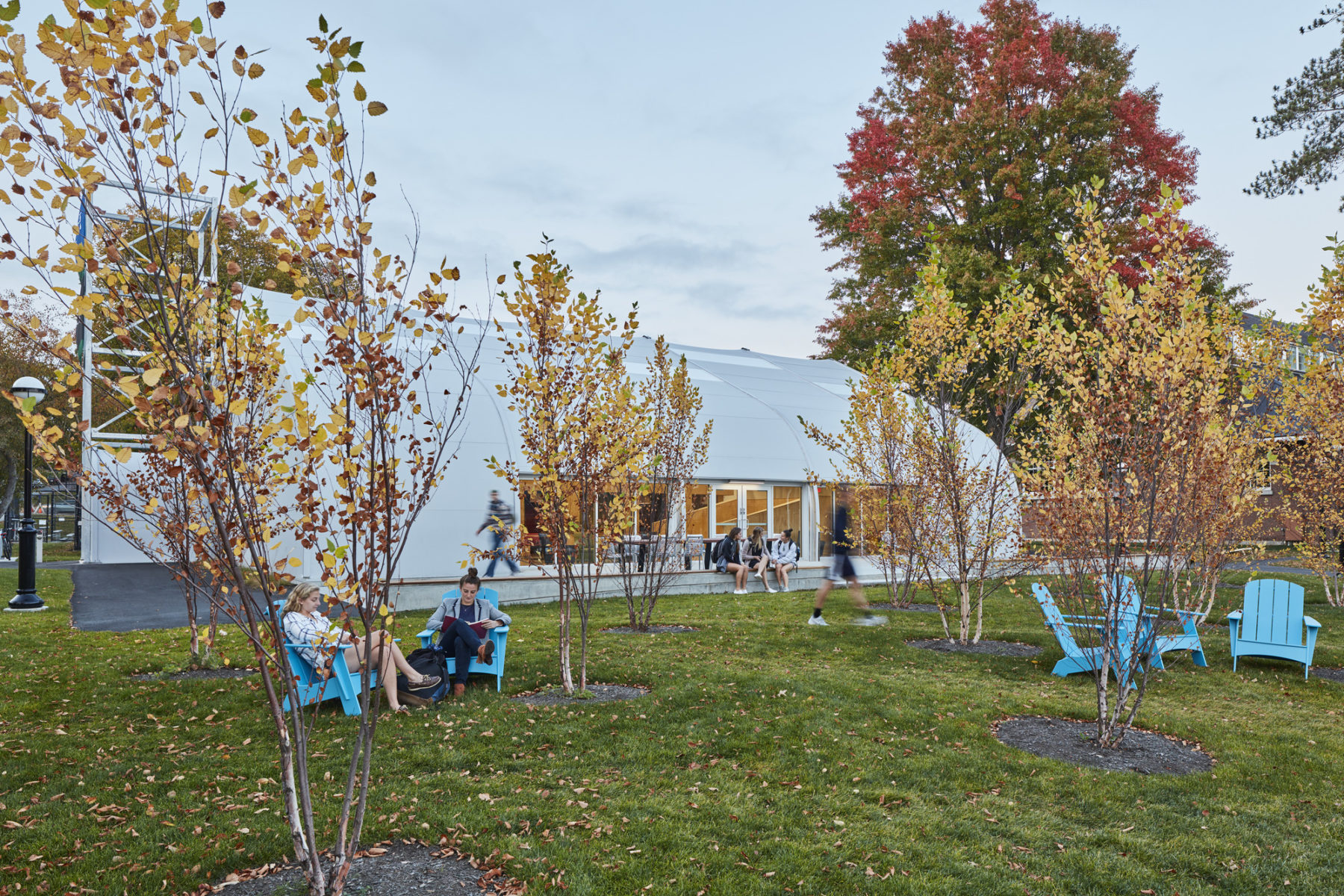
The North Park/South House Center is a tensile membrane structure, playfully nicknamed “The Onion” or “The Clove” for its unique shape and color
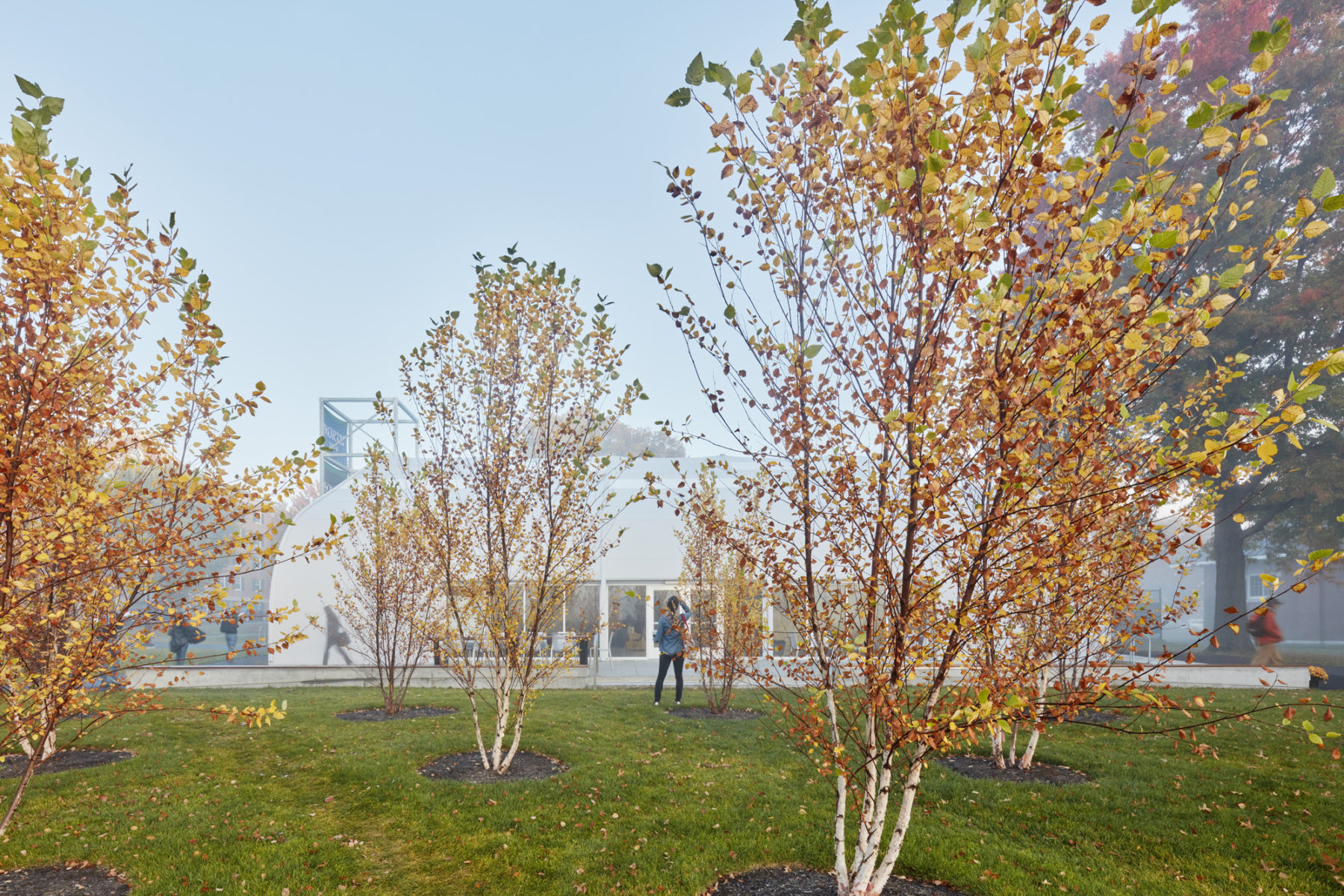
Implementing these experimental structures allows Dartmouth to learn what kinds of spaces students most need, insights that will helpfully inform the design and construction of more permanent buildings supporting student life in the future
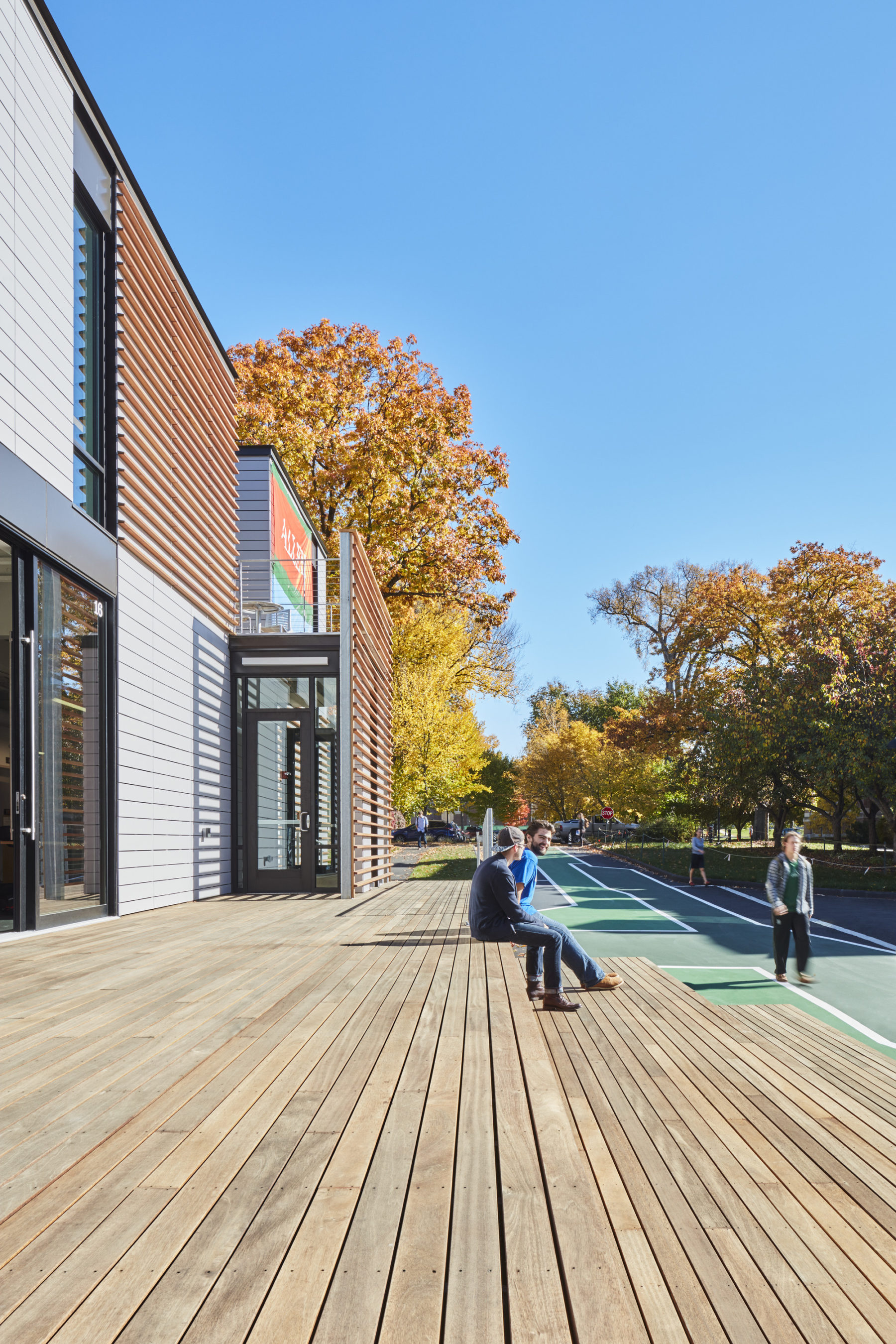
Since the adoption of the House system and the ribbon cutting for the two new social spaces on campus the new structures rarely sit idle
For more information contact Vinicius Gorgati.

